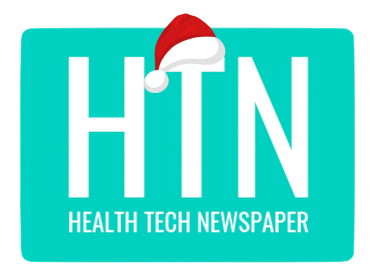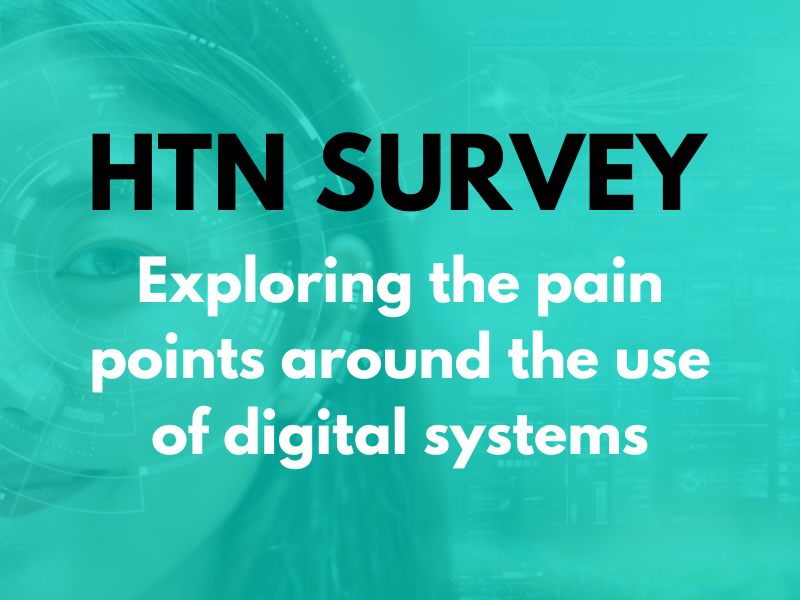By Gary Mooney, InterSystems
Electronic Patient Records (EPR) solutions, sometimes referred to as Electronic Health Records (EHR), are critical for the ongoing transformation of healthcare delivery, enhancing patient safety, clinical outcomes, operational efficiency, financial performance, and patient experience. However, widespread adoption reveals persistent challenges, including interoperability issues, poor user experience, excessive administrative burdens, limited analytics capabilities, and rigidity in adapting to new clinical demands.
Current EPR architectures range between specialised, integrated “Best of Breed” models and Unified Enterprise Platforms. While Best of Breed systems offer specialised functionality, they present greater complexity and interoperability challenges. In contrast, Unified Platforms simplify data integration and vendor management, though they may lack some highly tailored functionalities across specialist care disciplines.
Looking forward, emerging technologies such as Artificial Intelligence (AI) and Machine Learning (ML) promise transformative potential for EPR systems. These innovations enable predictive analytics, automation of routine tasks, advanced diagnostics, and personalised patient care, although ethical considerations and integration complexities remain significant.
More broadly, EPRs need to be architected to be able to effectively and efficiently respond to the inevitable changes in healthcare delivery models, therapeutic interventions, and future technologies. An EPR platform with rigid technical and data architectures will limit the long-term ability of healthcare services to continue to derive value from their EPR investment.
To realise the full strategic value of EPR solutions, healthcare providers must shift from a transactional to a relational care model, leveraging AI-enhanced enterprise platforms to facilitate interdisciplinary and integrated care models. Ensuring positive user adoption, aligning technological deployment with clinical workflow needs, and sustained post-implementation investment will be essential for future success.
Key Takeaways
- While EPRs have delivered significant benefits, they are not yet realising their full potential due to persistent challenges and a focus on transactional processes
- The future of EPRs is heavily influenced by technological advancements, particularly AI and ML, which offer the potential for truly transformative capabilities
- The “Unified Enterprise Platform” model, with its ability to consolidate data, is better positioned to leverage the power of AI/ML
- A strategic shift towards a relational, person-centric model of care, enabled by AI-enhanced EPRs and supported by robust data platforms, is essential to address the growing demands on healthcare systems
- Prioritising and actively managing positive user adoption by frontline staff is crucial for the successful implementation and sustained value of EPR solutions.
The Current State of EPRs
The adoption of EPR solutions by healthcare services around the world has, for many reasons, progressed at different rates. However, the presence of an EPR in more developed healthcare services in 2025 would be commonplace for acute, primary, and tertiary care services with community care more varied across international healthcare regions. For NHS England, acute services are approaching 100% coverage for EPR solutions (weblink) following a recent investment of over £400m to support 150 services to procure and adopt their first EPR solution.
The architectures for current deployed EPR solutions can be broadly categorised under the following:
- Best of Breed / Interfaced Model: Combines specialised systems, each chosen for its excellence in specific clinical or administrative functions, integrated to form a tailored, comprehensive EPR solution.
- Pros
- Highly specialised functionality tailored precisely to clinical and service needs
- Potential for smaller and incremental solution adoption
- Potential for smaller and less intensive solution maintenance and upgrade activities
- Reduces dependency on a single vendor
- Potential to retain existing systems
- Cons:
- Higher complexity due to managing multiple systems, integrations, and vendors
- Increased interoperability challenges, risk of fragmented user experiences
- Higher total cost of ownership due to integration, management, and maintenance overhead
- Increased complexity and risk for the assurance of the enterprise solution comprising many point systems and integration flows
- Complexity in data consistency and reporting across multiple platforms
- Potential limitations / complexities for enterprise level data analysis and use of emerging technologies such as Machine Learning
- Potential for mis-aligned and inconsistent product roadmaps across multiple vendors
- Pros
- Unified Enterprise Platform: provides an overarching single EPR solution that spans the services administrative, operational, and clinical operations with the potential to support healthcare services, regions, and nations from a single platform.
- Pros
- Single Source of Truth: All patient data is centralised and accessible in real-time
- Integrated User Experience: Consistent workflow, interface, and reduced training requirements
- Reduced Complexity: Fewer interfaces mean simpler IT maintenance and lower interface costs
- Easier Vendor Management: Single contract simplifies vendor relationships and negotiations
- Improved Data Integrity: Less risk of data errors due to reduced integration complexity
- Enhanced Analytics and Reporting: Easier data consolidation supports better analytics capabilities
- Cons:
- Potentially less tailored functionality compared to specialised best-of-breed systems
- Platform upgrades and maintenance can be more complex and intensive
- Typically involve larger-scale deployments that present more complex, challenging, and intensive change and transformation programmes
- Typically represent a shorter term more expensive investment
- Pros
Both architectures do however provide similarities in the range of challenges, benefits, and outcomes for healthcare services they aim to deliver. EPRs have to date been a key driver in moving healthcare services from historical paper-based processes to digital first care processes for the planning, management, and delivery of patient care. Such EPR platforms, to greater and lesser degrees, have seen a wide range of benefits delivered for care services that can be broadly categorised under the following:
- Patient Safety
-
- Reduced medication errors through improved accuracy of prescribing and administration
- Enhanced patient identification, reducing risks associated with incorrect treatments
- Real-time clinical alerts and decision support systems to mitigate adverse events
- Clinical Outcomes
-
- Improved clinical decision-making enabled by access to comprehensive patient data
- Enhanced consistency of care delivery through the reduction of unwarranted variations in care
- Greater adherence to best-practice guidelines resulting in better patient outcomes
- Operational Efficiency
-
- Reduced administrative workload through automation of key documentation processes
- Streamlined workflows enabling faster access to patient information at the point of care
- Improved resource allocation and management due to enhanced visibility of clinical activity
- Financial Performance
-
- Reduction in operational costs through decreased reliance on paper-based systems
- Increased revenue capture by ensuring accurate coding and billing processes
- Enhanced resource utilisation leading to reduced unnecessary tests and extended hospital stays
- Patient Experience
-
- Improved patient satisfaction through quicker and more coordinated care delivery
- Greater patient involvement and transparency enabled by easier access to personal health information
- Enhanced communication between patients and healthcare providers through digital messaging and online portals
Whilst EPR solutions deliver benefits for healthcare services, there is a sparsity of case studies that report radical service transformations across the enterprise that have been enabled and supported by the adoption of an EPR solution. Three key factors that heavily influence the extent of service transformation and value delivered by an EPR solution can be summarised as:
- Adoption models: that are more focussed on the technological aspects of a programme rather than service transformation
- EPR solution design: architected as a pure user transactional model for the documentation of the planning, management, and delivery of care
- Post go-live investment: lack of on-going focus and investment (from services and suppliers) to deliver a long-term optimisation and continuous improvement programme that learns from live operational use and reflects this in the evolution of solution configuration and product development
The above factors can result in frustration and sub-optimal adoption of the EPR solution by front line healthcare staff. In the US, for example, where there are additional revenue considerations within the healthcare system, for many years frontline staff have expressed their frustrations with their EPR solutions by calling it ‘…a billing platform with some patient stuff attached…’., some putting their pains to music in their video from 2016 (weblink).
More common frustrations expressed by frontline staff in relation to their use of EPR solutions include:
Interoperability and Integration
- EPR solutions, particularly integrated models, can remain siloed, unable to share patient data seamlessly between departments, services, and regions
- Lack of interoperability hinders coordinated care, especially across primary, secondary, and specialist services
User Experience and Usability
- Complex and unintuitive interfaces lead to clinician dissatisfaction, errors, and productivity loss
- Poor design contributes to clinician burnout and decreased adoption
Clinician Workload and Administrative Burden
- Poor UI design and workflow modelling can add administrative tasks rather than reducing workload
- Excessive documentation and form-filling can distract clinicians from direct patient interaction
Lack of Meaningful Real-Time Analytics
- Some EPR solutions fail to effectively leverage real-time data analytics to inform clinical decisions or operational management
- Poor analytics capabilities limit proactive patient management and resource planning
Limited Personalisation and Patient-Centricity
- Limited support for personalised care pathways or patient-centred interactions
- Patients have limited access or ability to interact meaningfully with their own health records
Innovation and Flexibility
- Legacy systems struggle to adapt rapidly to evolving clinical needs, digital innovations, or new models of care
- Inflexibility limits responsiveness and scalability within healthcare services
Training and Adoption
- Insufficient training and change management lead to poor adoption, misuse, and reduced system effectiveness
- Clinicians and administrative staff often lack ongoing support after initial implementation
For healthcare services, such as the NHS here in the UK, there remains the challenge of having to balance the pressures resulting from chronic budgetary constraints, staff shortages, post pandemic recovery, and a modern and ageing society demanding more from healthcare services. Many services have therefore had to adopt strategies that could be summarised as ‘not letting best be the enemy of better’.
A recent study conducted by The Health Foundation in 2025 has reported similar conclusions (weblink).
There is, however, a growing perspective that despite these challenges, EPR solutions must start to deliver more value and enable a greater range of service transformations whilst enabling services to continue to deliver safe, timely, and appropriate care for their patients and service users. This is where, from my perspective, EPR suppliers need to take on this challenge to reimagine the concept of an EPR platform and how new and emerging technologies can deliver solutions that can be practicably adopted to deliver tangible paradigm shifts in the delivery of healthcare services.
Forces Shaping the Future of EPRs
There is a wide range of increasingly prevalent forces that are shaping the future direction of EPR product strategy and models of adoption. These include:
- Technology: Cloud, APIs, data fabrics, real-time data insights, smart devices, personalised medicine, artificial intelligence, and machine learning
- Policy and Regulation: Data-sharing mandates, national digital strategies, national and international alignment on interoperability standards
- Workforce and Workflow Needs: Clinician input, team-based care, hybrid care delivery models, drive for interdisciplinary care
- Patient Expectations: Digital access, participation in care, transparency, and continuity of care across services/agencies
- Shift to Value-Based Care: The move away from the volume-based, fee-for-service model toward a more performance-based, outcomes-driven approach
- Industrialisation of Healthcare: Providers needing to serve more patients and deliver better quality care with a higher degree of standardisation and productivity
- Cost Containment and Efficiency: Healthcare services needing to make hard, thoughtful and informed decisions about every aspect of their operations, with IT optimisation being a key contributor
- Person-Centric Focus: Organisations are adopting technology and process improvement strategies with a “person-centric focus” to facilitate information exchange for the planning, management, and delivery of care across integrated care pathways
To be able to positively respond to these healthcare market drivers EPR suppliers will need to not only respond to the use of new technologies such as AI and ML within their solutions, but also and more importantly embed a deep appreciation of how frontline healthcare services operate across the varied disciplines, sectors, settings, and locations.
AI and ML: Emerging and Future Technologies for EPRs
AL and ML arguably represent the largest potential for delivering a true paradigm shift for the design, adoption, and value EPR solutions can deliver healthcare services. Whilst, there is a cacophony of media hype surrounding AL/ML, this should not detract from the tangible advances and value these technologies can offer in enhancing existing EPR platforms and presenting the opportunity for new solution concepts, use-cases, and capabilities that will deliver meaningful and sustained improvements for frontline staff, patients, and healthcare services from an enterprise perspective.
- Illustrative Use-Cases
- Predictive analytics for clinical decision support and service insights
- Natural language processing (ambient listening) to reduce manual data entry and remove the distracting use of IT during patient encounters
- Generative AI for the rapid synthesis and presentation of pertinent patient information (potentially spanning a lifetime of care records)
- Risk stratification, personalised treatment planning
- Optimisation of care resources and activity
- Opportunities
- Automating routine tasks and documentation
- Enhancing safety with real-time anomaly detection
- Enabling proactive, rather than reactive, care
- Optimisation of care resources to enhance productivity and ‘time to treat’ times
- Advanced diagnostics to support clinical interpretation of results and treatment planning
- Challenges
- Ethical and regulatory considerations
- Transparency and trust in AI-driven recommendations
- Data quality and training bias risks
- Integration into clinician workflows without adding cognitive load
- Other Related Emerging Tech
- Digital twins
- Ambient clinical intelligence
- Federated learning
- Personalised medicine through genomics
- Wearables and IoT integration for real-time data flow into EPRs
A comprehensive, unified, and real-time data platform providing on-demand access to high-quality and reliable data is a fundamental requirement to make AI/ML a transformational asset for healthcare services. This is where the Enterprise EPR model has considerable advantage over the Best-of-Breed/Integrated model to more effectively and efficiently provide access to comprehensive datasets that provide a seamless view of clinical, operational, and administrative data.
AI enabled EPR solutions underpinned by enterprise scale data platforms, ideally with integrated AI technologies such as Retrieval Augmented Generation (RAG) and Vector Search capabilities present the opportunity to support the delivery of transformed healthcare ecosystems by (example weblink):
- Moving from transactional to intelligent and contextual based EPR solutions that closely reflect personalised working practices and interdisciplinary care processes
- Delivering EPRs as platforms that connect across care settings and disciplines
- Playing an enabling role in multi-provider, integrated care delivery and population health management
A recent report describing the ‘astounding’ results achieved by Texas Children’s hospital’s use of AI has described the impact for key improvement measures such as clinician efficiency, and patient experience (weblink). The provision of an enterprise scale and unified data platform is also identified as key enabler for these achievements.
The National Institute for Health and Care Research outline ten exemplar use-cases for AI, all of which would be both enabled and enhanced by an underpinning AI enabled EPR platform (weblink). The example clinical scenarios described are:
- Earlier detection of heart disease
- More accurate diagnosis of lung cancer
- Prediction of disease progression
- Personalisation of cancer and surgical treatment
- Modelling to forecast service demand and reduce unnecessary attendance to services such as ED
- Population health modelling to predict cohorts at risk of disease and provide personalised care plans
Conclusion: From Records to Relationships
Whilst EPR solutions have been proven to deliver a wide range of clinical, operational, and financial benefits for healthcare services, these have very much been tactical in nature. The rapidly evolving demands being placed on global healthcare services will require strategic remodelling of care structures to embrace concepts such as interdisciplinary and integrated models of care spanning both health and social care services. EPR technologies must themselves adapt and evolve to better support healthcare services deliver the required strategic transformations.
Enterprise EPR platforms transformed by AI and ML technologies and underpinned by data fabrics that can provide on-demand real-time access to ‘healthy data’ that blends clinical, operational, administrative, and fiscal data will prove to be the enabling foundation to meet the needs and demands of healthcare services that are able to perform within the realities of international economics and care needs of modern and ageing societies.
The strategic vision for next generation EPRs should define these platforms as the catalysts for safer, smarter, more person-centred care. A paradigm shift is required to move the concept of EPR solutions from the primary purpose of collecting and managing digital records to a platform that facilitates and promotes a relationship orientated model of care between and across care sectors with the patient always remaining the central focus.
Models for the adoption of EPR solutions must also evolve to overcome those frustrations expressed by frontline care professionals. Positive user adoption should be a central measure of performance and success for an EPR and adoption models, pre and post go-live, should pay closer and more meaningful attention to the realities and demands of frontline clinical and operational healthcare services.






